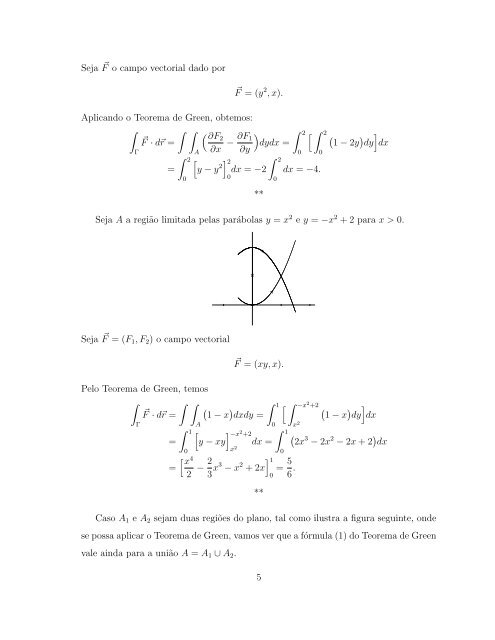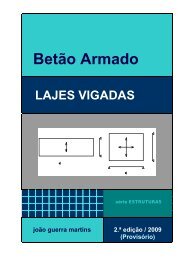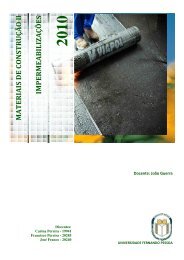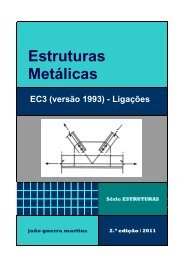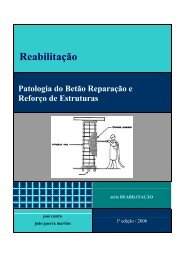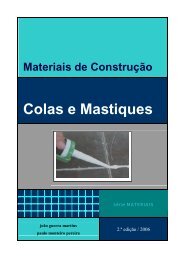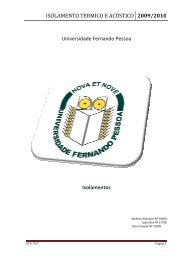Create successful ePaper yourself
Turn your PDF publications into a flip-book with our unique Google optimized e-Paper software.
Seja F o campo vectorial dado por<br />
F = (y 2 , x).<br />
Aplicando o <strong>Teorema</strong> <strong>de</strong> <strong>Green</strong>, obtemos:<br />
2 <br />
∂F2 ∂F1<br />
F · dr =<br />
− dydx =<br />
Γ<br />
A ∂x ∂y<br />
0<br />
2<br />
0<br />
2 <br />
= y − y 2<br />
<br />
2<br />
2<br />
dx = −2 dx = −<strong>4.</strong><br />
0<br />
0<br />
**<br />
0<br />
<br />
1 − 2y dy dx<br />
Seja A a região limitada pelas parábolas y = x 2 e y = −x 2 + 2 para x > 0.<br />
Seja F = (F1, F2) o campo vectorial<br />
.<br />
. .<br />
.<br />
.<br />
.<br />
. .<br />
F = (xy, x).<br />
Pelo <strong>Teorema</strong> <strong>de</strong> <strong>Green</strong>, temos<br />
<br />
F · dr =<br />
<br />
1 − x dxdy =<br />
Γ<br />
=<br />
A<br />
1<br />
0<br />
4 x<br />
=<br />
2<br />
<br />
y − xy<br />
−x 2 +2<br />
x 2<br />
dx =<br />
− 2<br />
3 x3 − x 2 + 2x<br />
**<br />
1 −x2 +2<br />
0 x2 1<br />
1<br />
0<br />
0<br />
.<br />
= 5<br />
6 .<br />
<br />
1 − x dy dx<br />
2x 3 − 2x 2 − 2x + 2 dx<br />
Caso A1 e A2 sejam duas regiões do plano, tal como ilustra a figura seguinte, on<strong>de</strong><br />
se possa aplicar o <strong>Teorema</strong> <strong>de</strong> <strong>Green</strong>, vamos ver que a fórmula (1) do <strong>Teorema</strong> <strong>de</strong> <strong>Green</strong><br />
vale ainda para a união A = A1 ∪ A2.<br />
5


